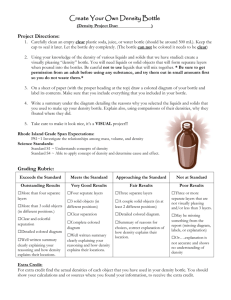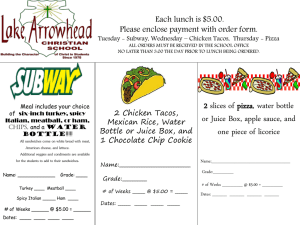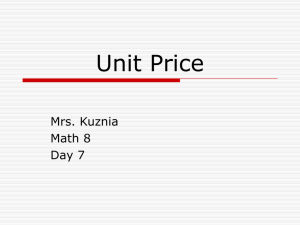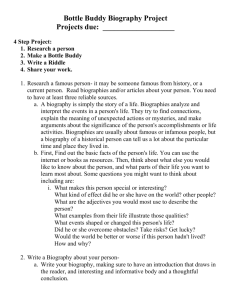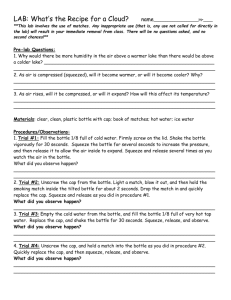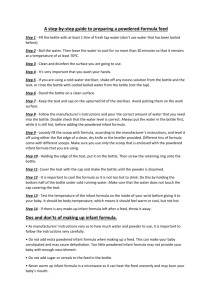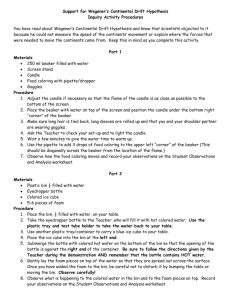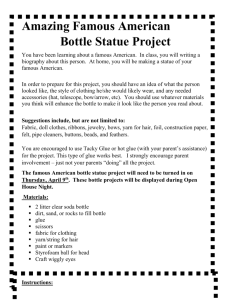Create Your Own Density Bottle
advertisement
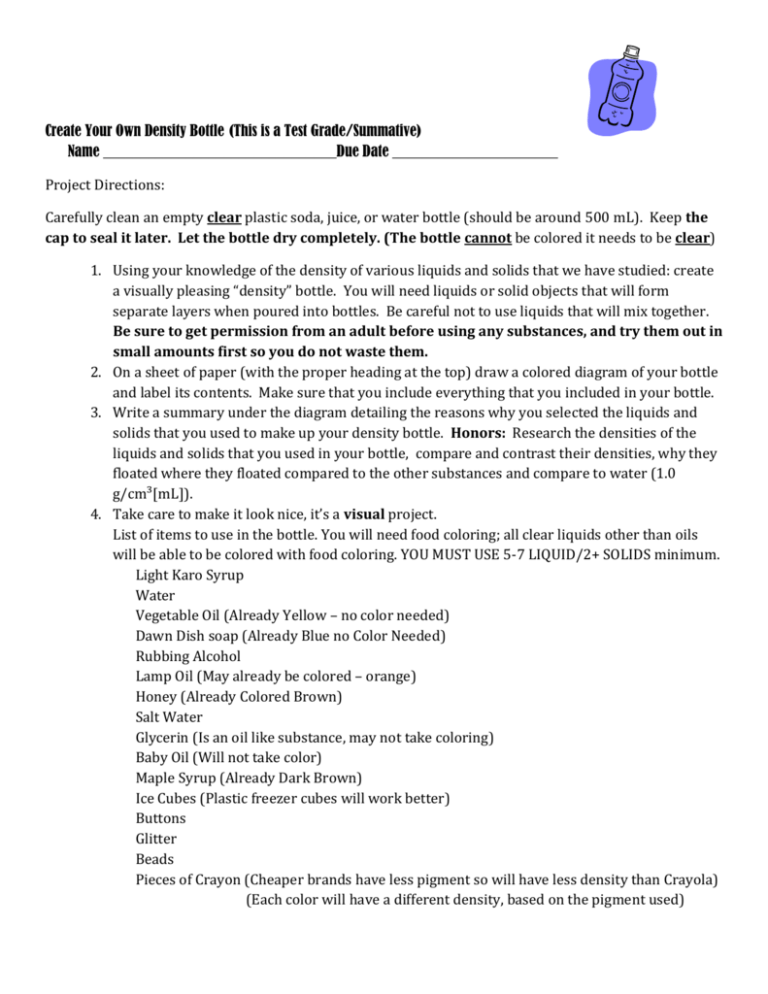
Create Your Own Density Bottle (This is a Test Grade/Summative) Name _______________________________Due Date ______________________ Project Directions: Carefully clean an empty clear plastic soda, juice, or water bottle (should be around 500 mL). Keep the cap to seal it later. Let the bottle dry completely. (The bottle cannot be colored it needs to be clear) 1. Using your knowledge of the density of various liquids and solids that we have studied: create a visually pleasing “density” bottle. You will need liquids or solid objects that will form separate layers when poured into bottles. Be careful not to use liquids that will mix together. Be sure to get permission from an adult before using any substances, and try them out in small amounts first so you do not waste them. 2. On a sheet of paper (with the proper heading at the top) draw a colored diagram of your bottle and label its contents. Make sure that you include everything that you included in your bottle. 3. Write a summary under the diagram detailing the reasons why you selected the liquids and solids that you used to make up your density bottle. Honors: Research the densities of the liquids and solids that you used in your bottle, compare and contrast their densities, why they floated where they floated compared to the other substances and compare to water (1.0 g/cm³[mL]). 4. Take care to make it look nice, it’s a visual project. List of items to use in the bottle. You will need food coloring; all clear liquids other than oils will be able to be colored with food coloring. YOU MUST USE 5-7 LIQUID/2+ SOLIDS minimum. Light Karo Syrup Water Vegetable Oil (Already Yellow – no color needed) Dawn Dish soap (Already Blue no Color Needed) Rubbing Alcohol Lamp Oil (May already be colored – orange) Honey (Already Colored Brown) Salt Water Glycerin (Is an oil like substance, may not take coloring) Baby Oil (Will not take color) Maple Syrup (Already Dark Brown) Ice Cubes (Plastic freezer cubes will work better) Buttons Glitter Beads Pieces of Crayon (Cheaper brands have less pigment so will have less density than Crayola) (Each color will have a different density, based on the pigment used) Description Number of Separate Layers Number of Solid Objects Clear and Colorful Separations Detailed Colored Diagram Well written summary Reasoning and explanation Total Points Points Possible 15 15 10 20 20 20 100 Grading Rubric Earned points Comments
